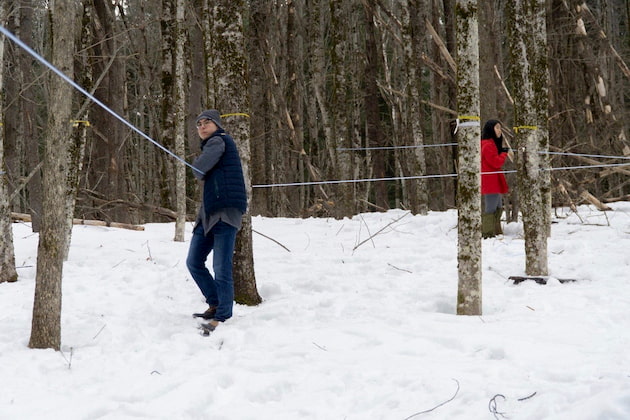Headlines
Another climate change study finds that maple season may come earlier
Season will start in December in future
By | JANUARY 24, 2020
HANOVER, N.H. —Yet another university study of the maple industry is claiming rising daily temperatures is affecting sap flow and sugar content.
By 2100, the maple syrup season in eastern North America may be one month earlier than it was during 1950 and 2017, according to a Dartmouth College study published in Forest Ecology and Management.
“As the climate gets warmer, the sugar maple tapping season will shrink and will get closer to a December date. Maple syrup producers may want to consider adapting their technologies and collection logistics in advance, so that they are prepared for how climate change is going to affect production,” said co-author David Lutz, a research assistant professor of environmental studies at Dartmouth.
The study examined six sugar maple stands from Virginia to Québec, Canada, over a six-year period.
The sugar maple stands are located in: Divide Ridge in southwest Virginia; Southernmost Maple in central Virginia; Indiana Dunes National Lakeshore in Indiana; Harvard Forest in Massachusetts; Dartmouth Organic Farm in Hanover, New Hampshire; and Chicoutimi in Québec, Canada.
The research team sought to test how monthly and season-long average temperatures during the tapping season, and temperature and precipitation from the preceding year, affect sap flow.
Each day of the maple season (from January to May) across the study regions, researchers obtained sap samples from 15 to 25 mature sugar maple trees.
They measured the volume and weight of the sap and conducted an analysis of the sap’s sugar content. Daily temperature readings were also taken.
With this data, the team could then look at the annual variability of the sap flow, to see how the data varied from tree to tree and from year to year.
Based on historical climate data, the researchers examined how past changes in minimum and maximum temperatures affected sap flow at each of the sites.
They created a model that predicted the timing for optimal sap flow based on historical temperature data pertaining to the freeze-thaw days, actual sap collection from their fieldwork, and monthly climate.
To calculate projections on how climate change will affect maple syrup production, the team used climate models based on the RCP 8.5 carbon emissions scenario, which follows current emissions trends.
The study found that most sap collection seasons were 45 days or fewer and that the middle of the sugar maple tapping season tended to fall in March or later for three-quarters of the sites.
According to modeling projections, by the end of the century, the team found that tapping season is projected to be, on average, one month earlier.
In addition, it is likely that by 2100, Virginia and Indiana will barely be able to produce any sap while production in Québec will be considerably enhanced.
Of the states in the study, New Hampshire and Vermont are likely to be the least affected but will still experience decreases in syrup production.
By the end of the century, most of the areas containing sugar maples in the U.S. are projected to see decreases in maple syrup production while areas in northern Ontario and Québec may see moderate to large increases in production.
In addition, the concentration of sap sugar is likely to become lower and more variable (28-36% lower across the modeled sites).































